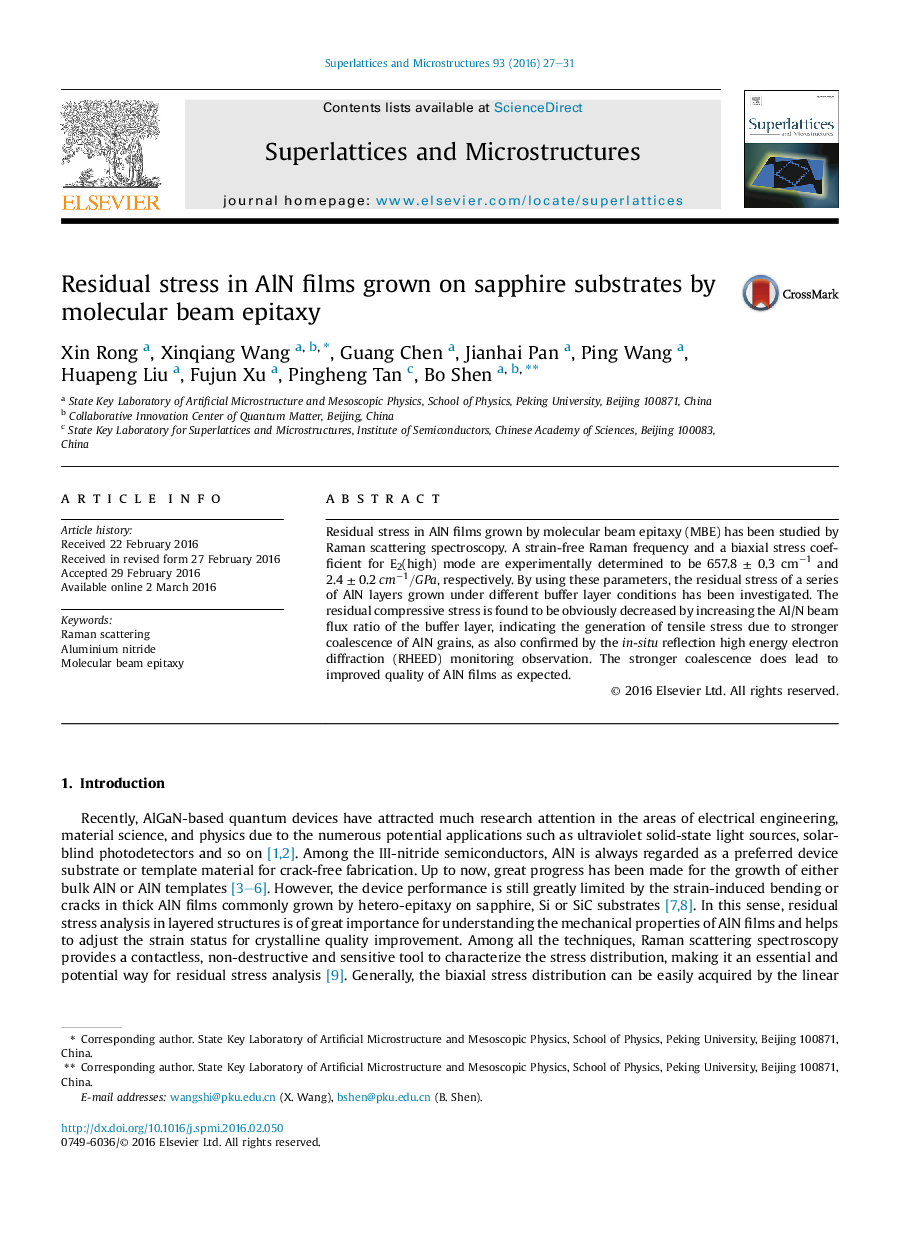| Article ID | Journal | Published Year | Pages | File Type |
|---|---|---|---|---|
| 1552577 | Superlattices and Microstructures | 2016 | 5 Pages |
•We grew a number of high-purity AlN films by molecular beam epitaxy.•The biaxial stress coefficient for E2(high) mode was determined, well in accord with the theoretical value.•The crystalline quality of MBE-grown AlN films was improved by increasing the Al/N ratio during AlN buffer layer growth.
Residual stress in AlN films grown by molecular beam epitaxy (MBE) has been studied by Raman scattering spectroscopy. A strain-free Raman frequency and a biaxial stress coefficient for E2(high) mode are experimentally determined to be 657.8 ± 0.3 cm−1 and 2.4 ± 0.2 cm−1/GPacm−1/GPa, respectively. By using these parameters, the residual stress of a series of AlN layers grown under different buffer layer conditions has been investigated. The residual compressive stress is found to be obviously decreased by increasing the Al/N beam flux ratio of the buffer layer, indicating the generation of tensile stress due to stronger coalescence of AlN grains, as also confirmed by the in-situ reflection high energy electron diffraction (RHEED) monitoring observation. The stronger coalescence does lead to improved quality of AlN films as expected.
